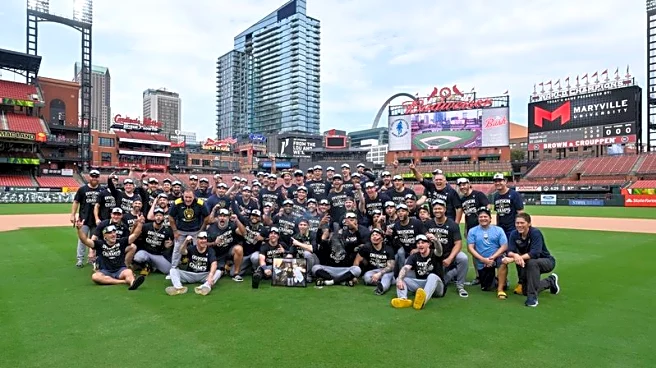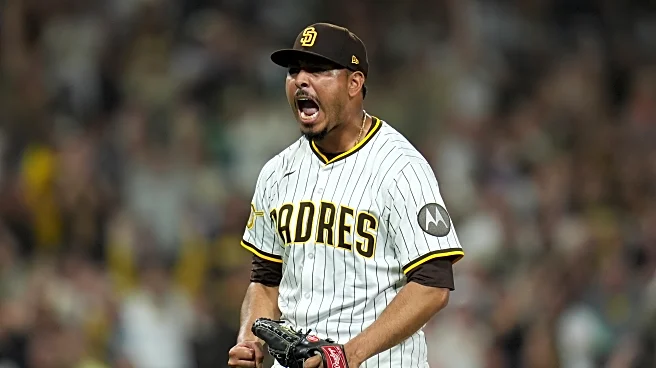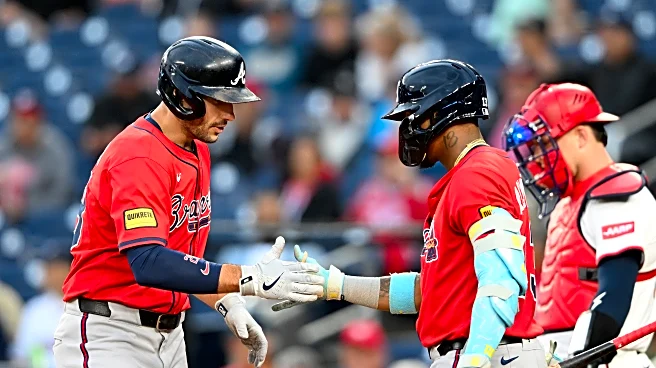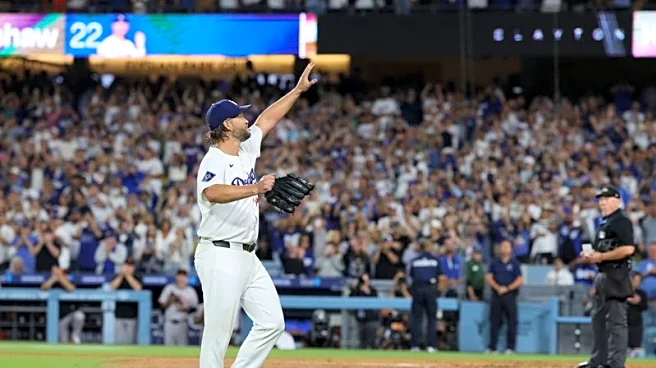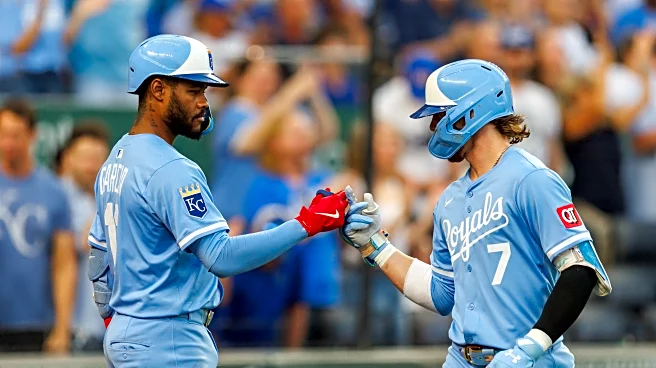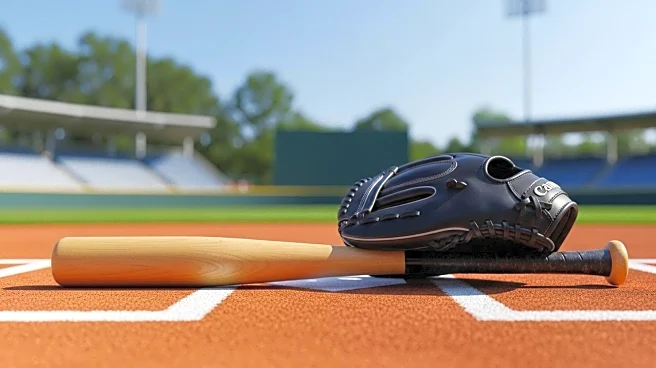What's Happening?
Ha-Seong Kim, a former San Diego Padres infielder and Gold Glove winner, has found renewed success with the Atlanta Braves after a brief and unproductive stint with the Tampa Bay Rays. Kim signed a two-year, $29 million contract with the Rays but struggled to make an impact, hitting just .214 in 24 games. Consequently, Tampa Bay placed him on waivers, allowing the Braves to acquire him. Since joining Atlanta, Kim has significantly improved his performance, batting .313 with three home runs, 20 hits, and 12 RBIs in just 18 games. This marks a notable turnaround, as he has already surpassed his production with the Rays despite playing fewer games. The Braves, who have been searching for a reliable shortstop since Dansby Swanson's departure to the Chicago Cubs, are optimistic about Kim's potential to fill this role.
Why It's Important?
Kim's resurgence with the Braves is significant for several reasons. Firstly, it strengthens Atlanta's lineup as they approach the postseason, providing both defensive stability and offensive power. His performance could be crucial in the Braves' playoff aspirations, especially given their recent struggles to find a consistent shortstop. Additionally, Kim's success highlights the importance of strategic player acquisitions and the potential for athletes to thrive in new environments. For the Padres, Kim's departure and subsequent success elsewhere may prompt reflection on their roster decisions, particularly as they prepare for the playoffs with Xander Bogaerts back in the lineup.
What's Next?
As the regular season concludes, Kim will aim to maintain his strong performance with the Braves, potentially playing a key role in their playoff campaign. The Braves are likely to face the Chicago Cubs in the first round of the playoffs, and Kim's contributions could be pivotal. Looking ahead, Kim will prepare for a full season with Atlanta in 2026, where he is expected to continue his role as a central figure in the team's lineup.
Beyond the Headlines
Kim's journey underscores the dynamic nature of professional sports, where player performance can vary significantly based on team fit and environment. His case also illustrates the financial and strategic considerations teams must weigh when acquiring or releasing players, as well as the potential for athletes to reinvent themselves in new settings.


